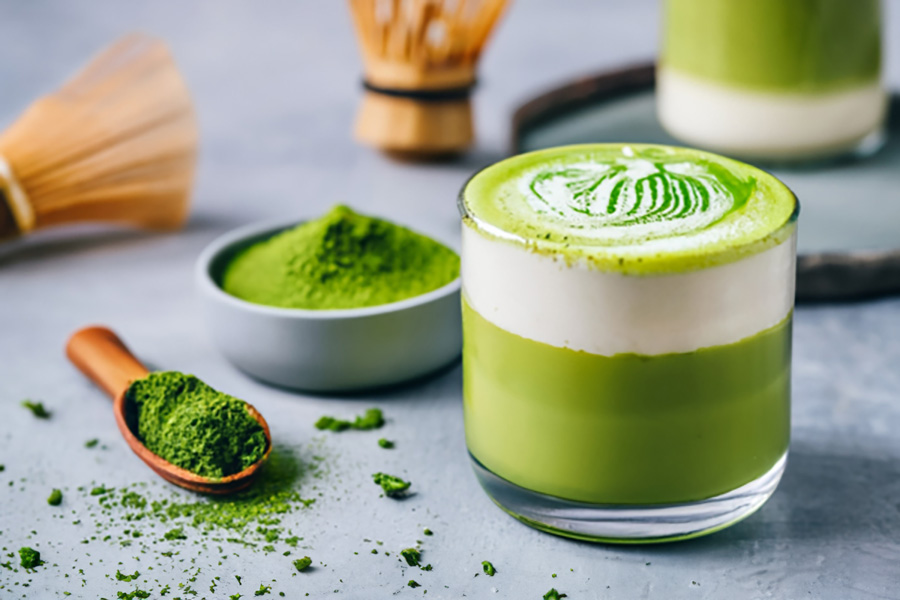By, Nurhanis Nafisa binti Norhashiman
Is matcha latte your favourite drink? And are you a matcha enthusiast? If your answer is yes, you are one of the consumers who have contributed to the popularity of matcha, not only locally but also globally in these past few years. Basically, matcha is a type of green tea made from the powdered leaves of tea plant known as Camellia Sinensis. Originally, matcha was served as ceremonial tea at tea ceremonies in Japan back in the day and now matcha is widely available in the global market, not only as beverages but also being used in cooking.
Matcha is traditionally divided into four categories which are ceremonial, premium, culinary, and ingredient. Ceremonial matcha is the highest quality type of matcha which primarily used in Japanese tea ceremonies followed by premium matcha where by its quality is not on the same level as ceremonial-grade matcha, but it is still expensive due to its way of production and its quality which similar to ceremonial matcha; vibrant green coloured tea powder and silky smooth texture. Meanwhile, culinary matcha is mainly used in cooking such as desserts and baked goods; cakes, soft cookies, madeleines and many more delectable dishes where its bitter flavour complement the other ingredient in the recipes. That is why culinary matcha is the best option to create a perfectly balanced aftertaste between the hints of bitterness and sweetness of matcha in every bite. Last but not least, we have ingredient matcha that has many applications; used for making matcha-flavoured snacks, confectionary, and mass-produced instant canned, bottled, and powdered 3-in-1 drinks, even though it is the lowest-quality matcha available on the market.
It is easy to understand why matcha has become so popular recently. Compared to coffee, it provides a longer energy boost because it contains typically 70 milligrams of caffeine for a cup of matcha. Ultimately, the caffeine in matcha slows down the body’s absorption of caffeine by binding with phytonutrients, particularly L-theanine; a unique amino acid properties found in Camellia Sinensis plant. Furthermore, among many health benefits of matcha are its robust antioxidant properties. Matcha is therefore undoubtedly going to be an essential ingredient for beverages and cuisine for the time being and in the future as well rather than being only a temporary trend among the consumers.
However, a major matcha shortage occurred in 2024, mostly as a result of social media influencers prompting an increase in demand worldwide. TikTok and other platforms helped matcha gain popularity and reach previously unprecedented levels of consumption. Since matcha cultivation is an intricate procedure that requires specific factors of conditions
and time, the demand for matcha increased more quickly than production capacity. As this happened, Japanese suppliers found it difficult to fulfil the demand from both domestic and international orders, and many merchants around the world reported having empty shelves.
Major brands such as Marukyu Koyamaen and Ippodo Tea stated that their production could not keep up with rising demand, forcing temporary suspensions of certain matcha products until early 2025. Therefore, heated discussions concerning sustainable consumption and the effects of viral movements on conventional businesses have been sparked by the shortage.
Despite the health benefits and its unique taste matcha has offered, The United States Food and Drugs Administration (FDA) stated that adult should not consume more than 400 milligrams of caffeine per serving each day, which is about four to five cups of matcha. Not only that, it is crucial to keep in mind that we should consume matcha moderately to deter overconsumption as well as negative side effects caused by excessive caffeine intake such as headaches, insomnia, and increased heart rate. Hence, by practising moderate matcha consumption, we as consumers adopt sustainable practices that directly and indirectly help the matcha producers too which significantly contribute to responsible consumption and production whereby we will gain great satisfaction in producing and enjoying a high quality matcha for both producers and consumers, acknowledging matcha consumption and production are healthy and sustainable choices for our beloved planet – Mother Earth.***
- ‘Digital Parenting: Smart Online, Bright Future’ Urges Responsible Children’s Online Engagement - December 9, 2025
- Double Win: Best Paper and Best Presenter Awards at ICoGESD 2025 - December 3, 2025
- AHAS KIRKHS ‘Ibādah Camp 2025: Empowering the Role of Murabbi for a Resilient Ummatic Future - December 1, 2025
